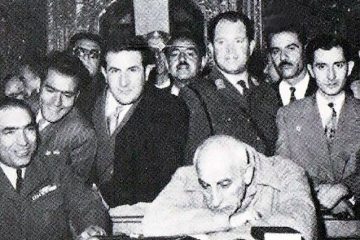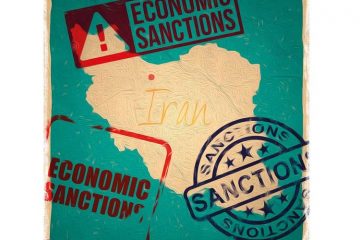Rebellion in El Salvador and US support for the government
The government of El Salvador has always been in the hands of military dictators, and the country’s economy is in the hands of the fourteen famous coffee industry families. Of course, the occasional burst and outbreak of accumulated dissatisfaction and complaints disrupted this precise order. The protest of several thousand students of the National University against the restriction of civil liberties in 1944 was an example of these riots. Of course, the government of the time also reacted against them; Expeditionary police regularly destroyed offices, classrooms and laboratories, beat the dean, killed a librarian, wounded students with bayonets, and raped dozens of young girls. The story continued to the point that even soldiers fired directly at them.
This bloody event marked a turning point, and a group of army officers staged a coup in October of the same year to carry out major political and social reforms; But the new government lasted only three months. Dr. Fabio Castillo, a former president of the National University and a member of the ousted government, later testified in Congress that the US embassy intervened directly during the overthrow of the reformist government, and members of the US military adviser openly escalated conspiracies and insurgencies.
Gradually, a parent organization was formed, of which smaller groups of protesting leftists were affiliated. Agricultural unions, working-class leaders, workers, and others who devoted themselves to land reform and creating better conditions for rented farmers were members of these groups.
During the 1960s, various American experts, by strengthening and purifying El Salvador’s security and counterinsurgency apparatus, gradually penetrated the body and became active throughout the country: police, national guard, army, communication and intelligence networks, and so on. They even connected and collaborated with their counterparts and allies in other Central American countries. It was later revealed that they were in fact forces and resources sent to the country to launch a full-scale crackdown.
Violence and protests against the government were rare during this decade. But in the 1970s the tidal turned. The government and its affiliated militias, which called themselves death squads, clashed with union leaders, village organizations, parties, and even priests and religious officials. The slogan of a death squad was:
“If a patriot, kill a priest”; Because the priests were accused of teaching sabotage to the villagers. Death squads were the output of security organizations and agencies that the CIA and the US military played a key role in creating. Regular CIA surveillance programs provide the security apparatus with information about the whereabouts of various individuals; The same ones who fell victim to the death squads.
If all of Jimmy Carter’s claims to human rights abuses were serious and genuine, his government would have chosen, or at least not intervened, in favor of the El Salvador opposition. Thus, as usual, the Carter administration continued to provide military support to the El Salvador government only with a glimpse of the principles it had proclaimed. A few days before the end of his presidency in January 1981, Carter ordered $10 million in aid and the sending of American advisers to El Salvador. Two years later, as an ordinary citizen, Carter said, “I think the Salvadoran government is now one of the bloodiest regimes in the Western Hemisphere!”
Years later, the New York Times wrote: “US aid to El Salvador was used to train police forces in the 1950s and 1960s, and many police officers later became commanders of right-wing squads that killed tens of thousands in the late 1970s and early 1970s. “They killed in 1980.”
US military aid to El Salvador in the 1980s and early 1990s, in the field of equipment alone, reached billions of dollars; To date, the press has generally estimated the figure at $ 6 billion, but the exact figure is still unknown. The Bureau of Arms Control and Foreign Policy of the bipartisan Congressional Caucus accused the Reagan administration of providing incomplete, misleading, and sometimes false information about aid to El Salvador; The Reagan administration also responded by dismissing the charge, claiming that the commission owed most of its military aid to development aid and underestimated the real cost of the hardware, even when properly assigned to the military.
In addition to training thousands of El Salvadorian troops on US soil and in El Salvador and even the Panama Canal, military training a few years ago with the help of Argentina, Chile and Uruguay on behalf of the United States, military aid through Israel can be added to these costs.
One of the results of US operations in El Salvador was the increase in the armed forces and other El Salvadorian security services in exchange for large amounts of weapons, training and money. The number of troops increased from approximately five to twelve thousand between 1979 and 1983 to twenty-two thousand (plus eleven thousand civilian security forces). Three years later, the total number of these forces reached fifty-three thousand. Of course, their access to endless equipment continued. In January 1982, for example, insurgents shot down sixteen to eighteen aircraft during an attack on an airport, but the United States replaced them with 28 aircraft in one week.
The extent of US control and influence in military operations is evident from President Duarte’s 1984 interview with Playboy magazine:
Playboy: “Do US military advisers tell you how to advance the war?”
Duarte: “The problem is … no? The root of the problem is that the Americans are helping us in situations where the use of facilities and forces really depends on their decision, not ours. Deciding to buy airplanes or helicopters, the number of boots and setting our priorities … all. Virtually any money spent there. “We will never see a single penny of it, because the money for everything that comes here has already been paid.”
Reference
Killing Hope: US Military and CIA Interventions Since World War II, William Blum, Chapter Fifty-four



0 Comments